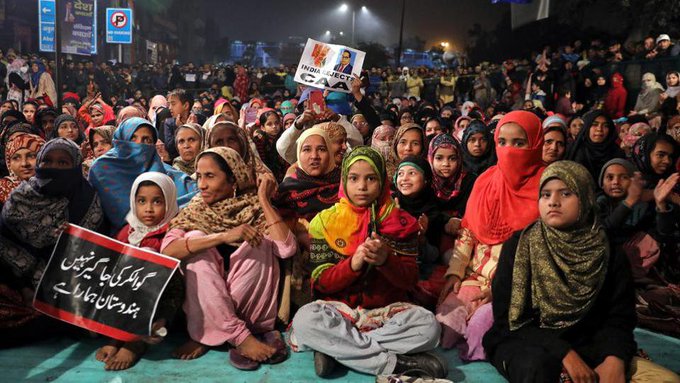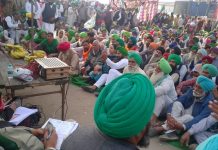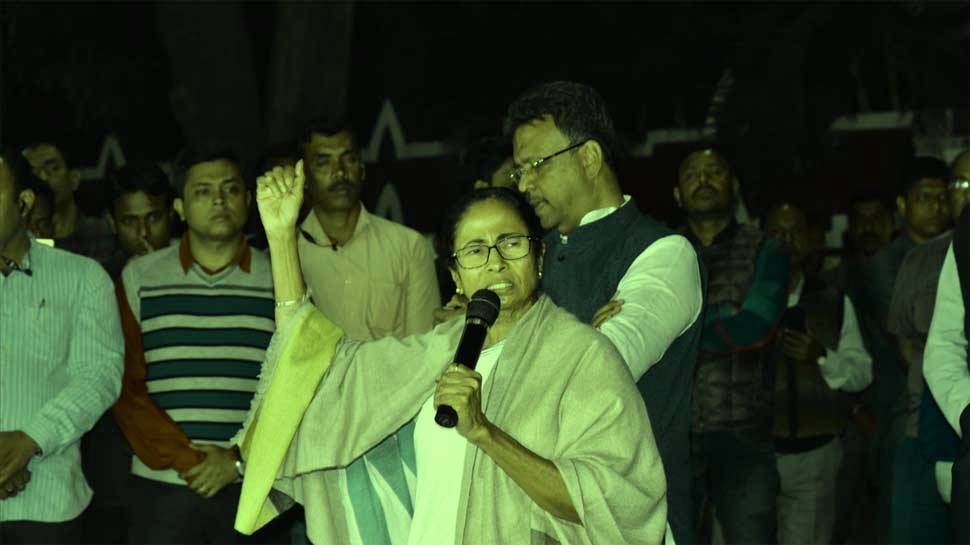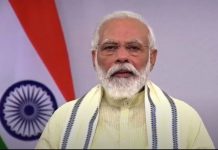
A walk down the Jamia area of protest and Shaheen Bagh puts forth a sight that one can seldom fathom, in this day and age of divisive politics. At a time when the government is patting its back for dividing India, introducing discriminatory and unconstitutional laws, Indians are gathering together with placards and slogans to protest. Indians are putting up banners and posters to voice their dissent. Indians are assembling from different parts of the nation to support each other. Creativity rules the sight of protest where one can see spectacular display via installation art, street painting and wall painting. Indians ensuring that their fellow country mates are fed and comfortable. This is the landscape of the protests taking place against the Citizenship (Amendment) Act, 2019.
“One has a moral responsibility to disobey unjust laws” ― Martin Luther King Jr. It is on this premise; one can validate the ongoing protest in Shaheen Bagh and Jamia. In nearly two months of protest, the streets of the country’s capital have turned into a mosaic representing the struggle against the Citizenship (Amendment) Act, National Register of Citizens, and the National People’s Register.
How is it that the amassing of so many diverse voices has accumulated content that has been repeatedly distorted and taken out of context? Besides everything that the protesters are doing right, what are they doing wrong? These are questions that need deliberation, before the protests wane out for the lack of coherence and structure.
Incoherency of demands
The key to an effective protest is coherence. A protest aims to lay down demands to consolidate their message and rationale. On close observation, it is evident that, Shaheen Bagh and Jamia have seen a bifurcated crowd with varying demands in the two months of protest. The range of demands vary from the removal of PM Narendra Modi and Home Minister Amit Shah; withdrawal of CAA, discontinuing NRC, to action against the Delhi police. The case in point, there needs to be a unified, rational and achievable demand.
The inclusion of a demand to remove a Prime Minister re-elected by the majority of the country portrays the incapability of the citizens to be decisive. This goes on to reflect, that the people are not sure of the demands and might even back-track on their decision to protest against the CAA. The focal point needs to be the withdrawal of the CAA and preventing the implementation of NRC. The need of the hour calls for the people to identify the imminent issue and channelise their strength towards it.
This varied list of demands stems from a larger issue, i.e. the failure of the protests to produce a leader. An individual with no political affiliations or an ideological label associated with himself/ herself to act as the voice of the crowd. Someone who can streamline demands and bring people together under a constitutional banner and address the pressing concerns. There is a looming fear amongst the crowd that a chosen leader will be targeted and smeared. But that is the risk that needs to be taken to fulfil the purpose of the protests.
The question that arises pertains to the virtue of a leaderless movement. If everyone is a leader, the demands will be as varied as the protesters themselves. A lot of people talking about a lot of things, amounting to nothing being heard.
“The task of the leader is to get their people from where they are to where they have not been” – Henry Kissenge.
Every movement has had a leader, for every movement needs a leader. It was Mohandas Karamchand Gandhi (Mahatma Gandhi) for the freedom struggle of India or Nelson Mandela for the fight against racism and the apartheid. The people will always need a leader for they can be easily side-lined, distracted and divided.
The bifurcation of demands and lack of leadership will be fatal to the movement resulting in none of the demands being heard. Arguably, it will be ignored on the grounds of incoherency and ideological difference.
The Colour of Ideology
December 18, 2019, saw the arrival of former JNU President and current Communist Party leader, Kanhaiya Kumar at Jamia Millia Islamia. He not only managed to rally the crowd and raise slogans of “Azaadi” which inevitably gave the movement a splash of the colour red.Kanhaiya Kumar is one of the strongest opposition to the ruling party. Unfortunately, the popularity and fame that accompanies Kanhaiya blinded the crowd from the fact that he is no longer the torch bearer of the youth and the protesters. He is a politician who has contested in the general election, an individual that represents a political party and an ideology.
Consequently, the protest shifted from a fight for upholding the constitution to a battle of Left vs. Right. This caused immense setback to the aim of the protests already labelled as being laden with “Muslim agenda”. Kanhaiya Kumar’s mere presence provided media organizations a narrative with which the country can be distracted and the protests devalued. A struggle for true democracy and unconstitutional laws was again boiled down to a difference in ideology and political aspirations. Those opposing the protests, found a quick and convenient escape route to unburden themselves and start the blame game.
Poor Response to Incitement
The greatest achievement of the Anti-CAA movement is the peaceful nature of the protests, a reflection that citizens are merely exercising their democratic rights. A challenge it poses to those opposing the protests is to find a way to turn protesters into a mob. Break the virtue of a peaceful protest and taint it with some degree of violence.
On the 13th of January 2020, the crew of a popular Right-leaning news channel arrived at Jamia to cover the protests. They did so with complete knowledge of the treatment they are going to receive due to their reports pertaining to the protests. There was knowledge that the reception will not be a welcoming one. The team expected the backlash from the protesters and was going to base their reports on it. The purpose of the visit was to provoke and poke the protesters. It was imperative for the protesters gathered there to avoid any provocation and let them do their jobs, but they failed. The crowd sort to heckling the crew disallowing them to cover the protest.
The protesters failed to learn their lesson, since the same treatment was meted out to another well known news anchor from another news channel only eleven days later. Breaking news running across televisions news channels called the protestors at Shaheen Bagh everything from traitors to hooligans and terrorists.
And soon after these events several YouTube videos were uploaded, conveying a message that all the protestors at Shaheen Bagh were anti-social, indisciplined, violent and unruly people.
The video footages provided the media outlets the opportunity to discredit the protests claims of being peaceful. It allowed the media to portray the protests as hypocritical, divisive, and laden with a hidden agenda.
The fury against the TV reporters is understandable but preventing them from doing their jobs is objectionable. A stance for the freedom of expression cannot prevent others from expressing themselves, even if one does not agree with them.
Fighting division with division
On the 30th of January 2020, a popular English news channel held a debate in which they ran the hashtag ‘StopProvokingIndia’. It was after a 17-year-old gunman open fired in the Jamia protest area. The hashtag in itself is a method of shifting blame and deflection, but has been given a leg to stand upon by divisive speeches.
The discriminatory Citizenship (Amendment) Act has evidently infuriated the Muslim population of the country. Nonetheless, they are not the only community standing up against the act. People are showing a unified stance against this law. The protests have witnessed Hindus like Advocate Sanjay Hedge and Advocate Prashant Bhushan voicing their disagreement with the act, Sikhs setting up stalls to distribute food to the protestors and Kolkata’s Christian Community Leader Reverend Sunil M Caleb calling out the discrimination woven with the law. These are just few examples of people from different communities standing unified against the unlawful act.
But, there has been a lack of comprehension shown by some protestors. Slogans have been raised during the protests that have caused a division amongst the protestors. For instance, an entire march shouting “Tumhara Mera Rishta Kya, La Ilaha Ilallah” (What is our relation, there is no God but Allah). The march was shut down in a day, but the damage was already done.
This has tainted the protests with a radical and supremacist thought which does not resonate with the protesters at large. Furthermore, all this has assisted the media and opposition in turning the protests to another Hindu-Muslim matter rather than a constitutional issue.
Thus, it becomes vital for the people to realise that mistakes have been made and rectification is required. They need to comprehend that those in favour of the Act are awaiting a single wrong step in order to vivisect the protests and render them meaningless. The entire movement will slowly but surely lose its merit if it does not produce a leader. Divisive speeches rising from the protests will create friction amongst the protesters leading to death of the movement from within. Protests will be devalued and shamed if divisive slogans and speakers are allowed to run the narrative. Action has to be taken before the efforts of thousands of people goes in vain.
Syed Mohammed Sadique is pursuing a course in Mass Communication and Journalism at Amity School of Communication, Amity University, Noida.









